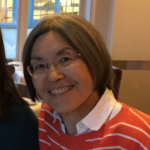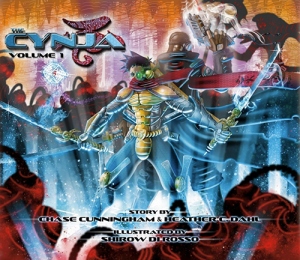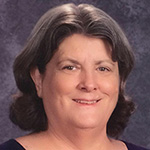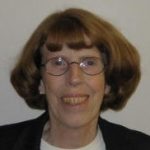I hope everyone had a great holiday break is leaping back into the school year with renewed drive and energy. With all of the chaos of the new year, you might have missed the call for nominations for the CSTA Board of Directors. There is no better way to contribute to CSTA’s mission of empowering and advocating for K-12 CS teachers than to serve on the Board. There are five open positions this year, four representing specific perspectives and a fifth, at-large position.
K-8 Representative: A classroom teacher who is currently teaching computer science at the pre-high school level.
9-12 Representative: A classroom teacher who is currently teaching computer science at the high school level.
International Representative: An international (outside the United States) classroom teacher who is currently teaching or promoting computer science at the pre-collegiate level.
State Department Representative: An educator or administrator who reports to a state department of education and oversees, in some capacity, computer science education.
At-Large Representative: An educator with responsibilities for K-12 CS education.
To apply for one of these position, you simply need to submit a resume and a brief application form – details can be found at http://www.csteachers.org/news/379241/Announcing-the-CSTA-Board-of-Directors-Elections–Nominations-Period.htm. The deadline for submissions is January 31 (11:59pm PST), so don’t wait too long. Questions can be directed to nominations@csta-hq.org.
In case you were on the fence about applying for the Board, here are answers to five of the most common questions that potential candidates ask:
Q: How much work is involved in being a Board member?
A: You have probably seen the phrase “the CSTA Board is a working board” in several places. What this means is that members of the Board are expected to help carry out the business of the organization – not just advise or supervise. This includes monthly virtual meetings and two face-to-face board meetings, one held in conjunction with the CSTA Annual Conference and another held in the late fall. While these meetings are packed and productive, most of the Board’s business is conducted throughout the year by committees, with individuals working from home and coordinating via phone conferences. The time commitment can vary by task, e.g., the work conducted by the Elections & Nominations Committee is concentrated around setting up and running the annual elections, and is light during other times of the year. On average, I would guess that the workload averages out to 2-3 hours per week.
Q: Are Board members expected to cover their own travel expenses to meetings?
A: No, expenses for travel are reimbursed (within reason) following CSTA’s travel policy guidelines. This includes travel, hotel, and meals at Board meetings. It also includes expenses related to attending the CSTA Annual Conference, since Board members are expected to attend this event and help out by proctoring sessions and assisting with registration. A copy of the travel policy is provided to all newly elected Board members.
Q: Why are there different positions on the Board, such as 9-12 Representative and International Representative?
A: The mission of CSTA is a broad one, promoting K-12 CS education and supporting the interests and professional development of our 26,000+ members. It is essential that the Board have a diversity of perspectives and experiences to address the issues and challenges that arise in the organization’s business. Each position has requirements to ensure that key perspectives are represented on the Board. For example, the 9-12 Representative is required to be a “9–12 classroom teacher who is currently teaching computer science at the high school level.” Once on the Board, all members are equal in status and welcome to contribute to all initiatives.
Q: If I apply for a position, does that automatically mean I will be on the ballot?
A: Unfortunately, no. According to the CSTA bylaws, the election ballot will list at most two candidates for each open Board position. If more than two qualified candidates submit applications, the Elections & Nominations Committee is charged with selecting the two most outstanding candidates to be placed on the ballot. Committee members independently rank the candidates using a rubric that considers factors such as leadership skills and experience, understanding of core issues in CS education, and alignment of goals to CSTA’s mission. While this model does sometimes mean that highly qualified candidates do not make the ballot, it does allow for us to keep the ballot size manageable while still providing detailed statements from each candidate.
Q: Why should I consider running for the CSTA Board?
A: Serving on the CSTA Board of Directors is an extremely rewarding opportunity to give back to the teaching community. Board members help to set the vision for the organization and work to promote CS education on a global scale. Their work supports and provides professional development for CSTA’s more than 26,000 members worldwide. In addition, working closely with other amazing educators is rewarding in itself.

JRN, Journalism, Media, Computing faculty members
Dave Reed
Past Chair, CSTA Board of Directors
Chair, Nominations & Elections Committee




 For 5-8-year-olds, Hello Ruby: Adventures in Coding by Linda Liukas is a wonderful place to start. Written to introduce young children to computing, it is a picture book about a “small girl with a huge imagination.” As Ruby goes on adventures, students learn about planning, sequences, algorithms, collaboration, conditionals, loops, and more. The book includes activities that go along with the story, and the
For 5-8-year-olds, Hello Ruby: Adventures in Coding by Linda Liukas is a wonderful place to start. Written to introduce young children to computing, it is a picture book about a “small girl with a huge imagination.” As Ruby goes on adventures, students learn about planning, sequences, algorithms, collaboration, conditionals, loops, and more. The book includes activities that go along with the story, and the  A graphic novel for 8-12-year-olds that covers multiple CS concepts is Secret Coders by Gene Luen Yang and Mike Holmes. It is the first in a series of books that combine logic puzzles and coding (in Logo) wrapped up in a mystery storyline. The
A graphic novel for 8-12-year-olds that covers multiple CS concepts is Secret Coders by Gene Luen Yang and Mike Holmes. It is the first in a series of books that combine logic puzzles and coding (in Logo) wrapped up in a mystery storyline. The 






